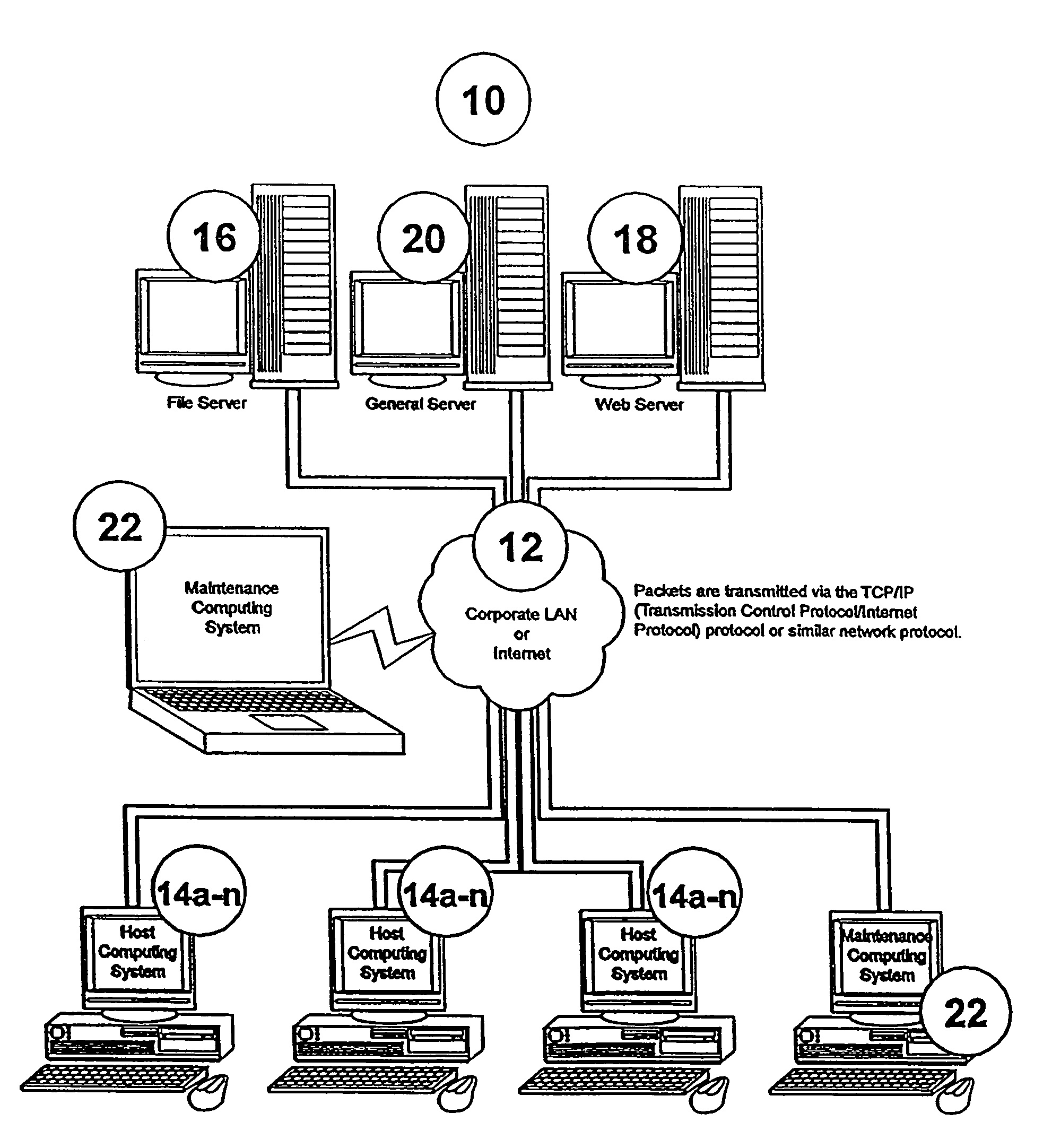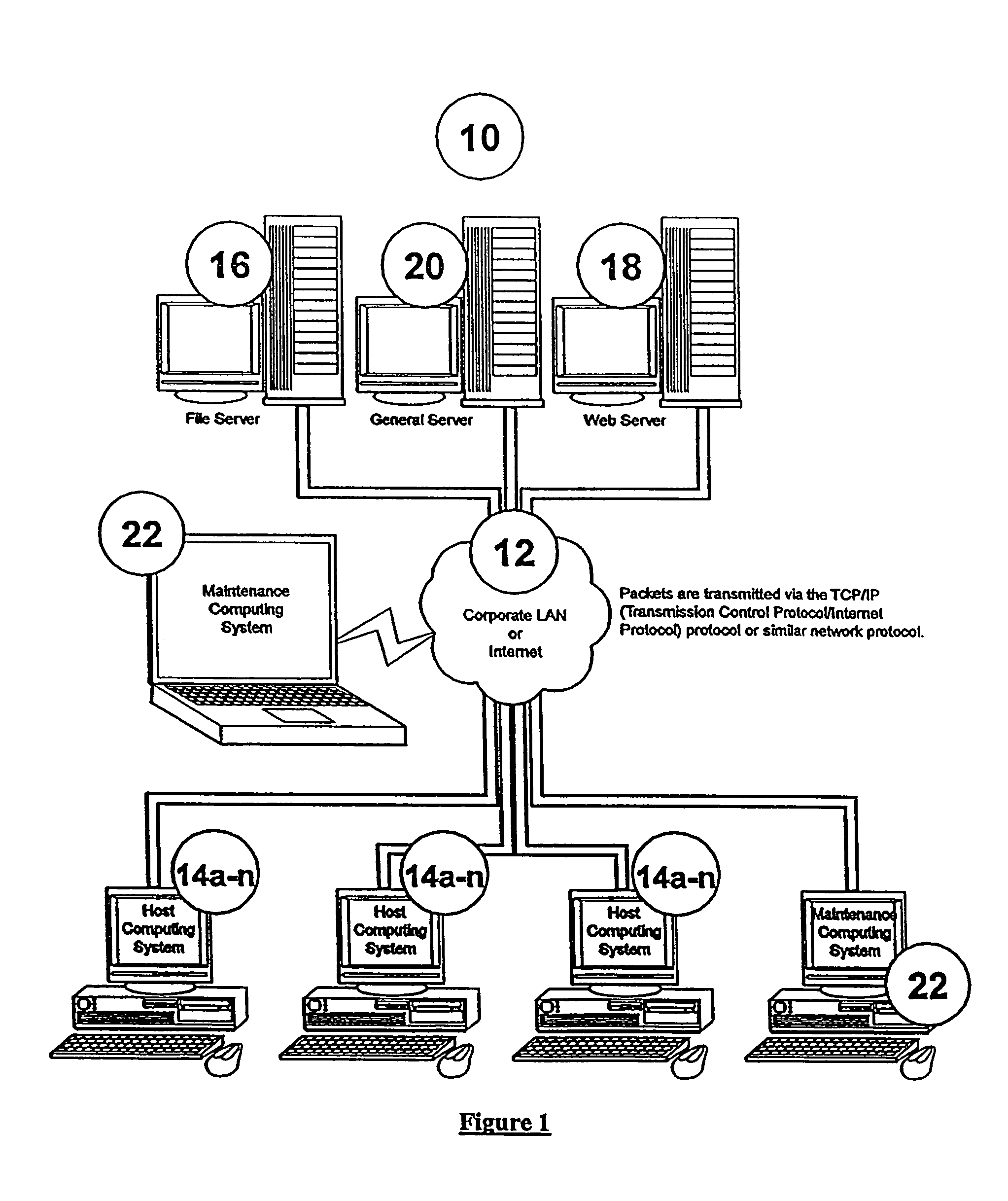Systems and methods for capturing screen displays from a host computing system for display at a remote terminal
a computing system and display technology, applied in static indicating devices, data switching networks, instruments, etc., can solve the problems of service of a particular computing system or server, not being able to provide maintenance information to the user of the computing system over the telephone, and being unable to meet the needs of users, so as to reduce the amount of data, reduce the effect of terminal emulation on network bandwidth and reducing the amount of data
- Summary
- Abstract
- Description
- Claims
- Application Information
AI Technical Summary
Benefits of technology
Problems solved by technology
Method used
Image
Examples
Embodiment Construction
[0045]The present invention now will be described more fully hereinafter with reference to the accompanying drawings, in which preferred embodiments of the invention are shown. This invention may, however, be embodied in many different forms and should not be construed as limited to the embodiments set forth herein; rather, these embodiments are provided so that this disclosure will be thorough and complete, and will fully convey the scope of the invention to those skilled in the art. Like numbers refer to like elements throughout.
[0046]FIG. 3A illustrates a general embodiment of the present invention as illustrated in the network system 10. FIG. 3A illustrates a host computing system 14, network 12, and a maintenance computing system 22. These devices are all part of a larger network system, such as the system illustrated in FIG. 1. The host computing system 14 associated with the present invention is similar to those previously discussed. However, the host computing system include...
PUM
 Login to View More
Login to View More Abstract
Description
Claims
Application Information
 Login to View More
Login to View More - R&D
- Intellectual Property
- Life Sciences
- Materials
- Tech Scout
- Unparalleled Data Quality
- Higher Quality Content
- 60% Fewer Hallucinations
Browse by: Latest US Patents, China's latest patents, Technical Efficacy Thesaurus, Application Domain, Technology Topic, Popular Technical Reports.
© 2025 PatSnap. All rights reserved.Legal|Privacy policy|Modern Slavery Act Transparency Statement|Sitemap|About US| Contact US: help@patsnap.com



